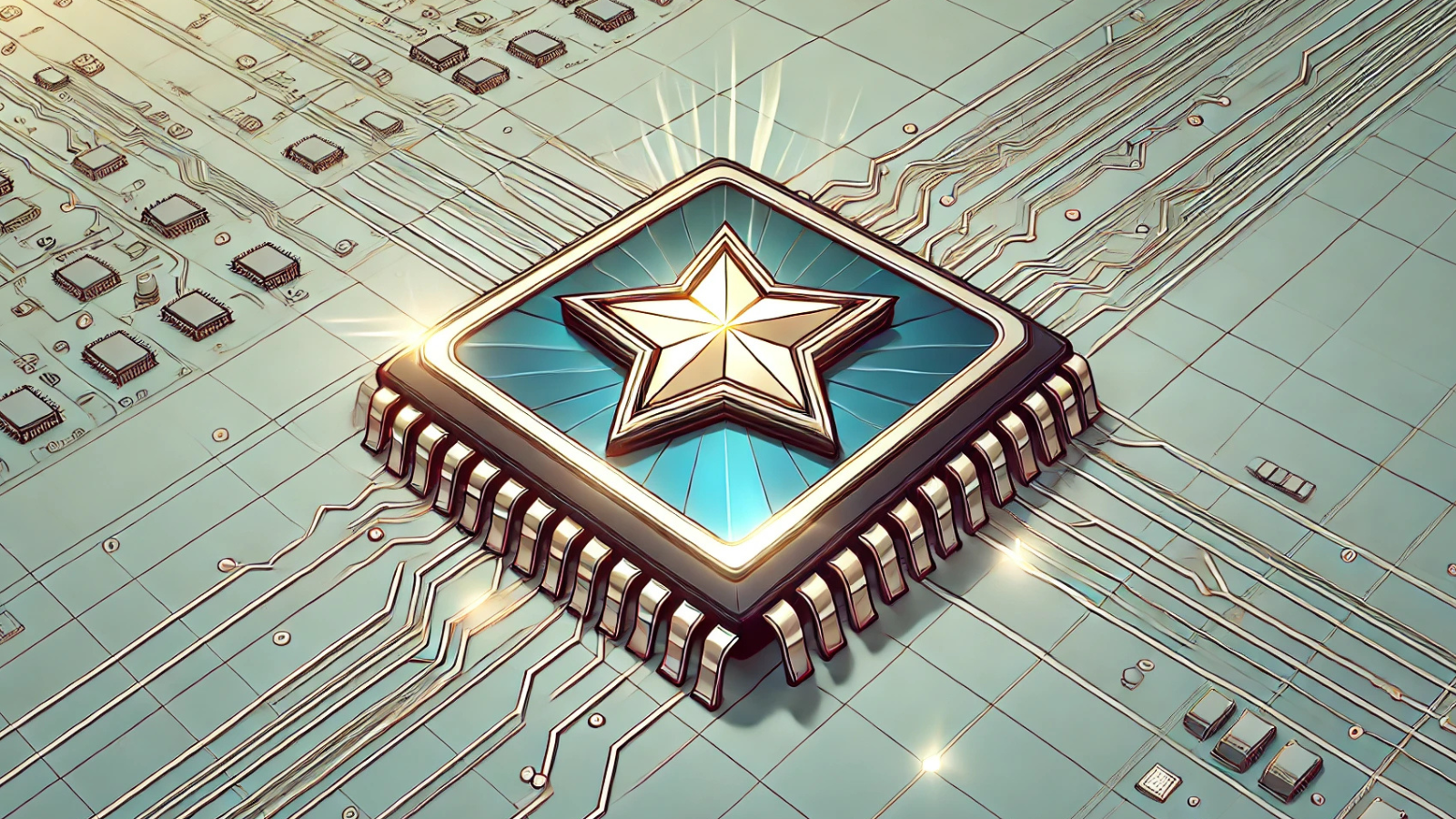Starknet: Unlocking the Future of Blockchain Scalability

As blockchain technology matures, the need for scalable, efficient, and secure networks becomes increasingly urgent. Ethereum, one of the most popular smart contract platforms, often faces congestion and high transaction fees during peak usage. Starknet, a Layer-2 solution developed by StarkWare, presents a compelling answer to these problems.
Using cutting-edge cryptographic technology, Starknet enables faster, cheaper, and more scalable decentralized applications (dApps) without compromising on Ethereum’s security. This research report explores Starknet’s core architecture, the utility of its native STRK token, and the project’s broader impact on blockchain development.
What is Starknet?
Starknet is a decentralized Layer-2 (L2) network built on top of Ethereum. Its goal is to solve Ethereum’s scalability issues by offloading computational work from the Ethereum mainnet. Starknet operates as a ZK-rollup (Zero-Knowledge rollup), processing thousands of transactions off-chain and sending a single cryptographic proof to Ethereum, drastically reducing the load on the base layer.
Launched in November 2021, Starknet differs from many L2 solutions because it uses STARK (Scalable Transparent Argument of Knowledge) proofs. These are highly secure, transparent, and resistant to quantum attacks. Starknet provides developers with an environment where complex and scalable dApps can thrive, especially in areas like decentralized finance (DeFi), gaming, and NFTs.
The Starknet Architecture
Cairo VM
One of Starknet’s standout features is its use of the Cairo Virtual Machine (VM), rather than Ethereum’s Virtual Machine (EVM). Cairo is a purpose-built programming language designed to optimize the creation of zero-knowledge proofs. Though this introduces a learning curve for developers unfamiliar with Cairo, it allows Starknet to leverage advanced cryptographic capabilities and scalability.
To ease adoption, Starknet is also planning to integrate EVM compatibility through the Kakarot EVM project by the end of 2024. This would allow developers to build with Solidity, Ethereum’s native language, opening Starknet to a broader audience.
Sequencers and Provers
Starknet’s infrastructure includes two key components:
- Sequencers: These nodes bundle and process transactions off-chain. They ensure the ordering and validation of transactions before passing them to the prover.
- Provers: The prover verifies the computations performed by the sequencer using STARK cryptographic proofs. Once a valid proof is created, it is sent to the Ethereum mainnet to confirm the accuracy of the transactions.
Together, these components help Starknet achieve high throughput and low latency, while still anchoring security on Ethereum.
Account Abstraction
In a notable shift from Ethereum, Starknet implements Account Abstraction natively. This means that every user account is treated as a smart contract. This approach allows for advanced functionalities such as:
- Social login and recovery
- Multi-signature approvals
- Custom transaction logic
- Enhanced security for users
This is especially helpful for making blockchain more user-friendly and accessible to mainstream audiences.
STARK Proofs: Why They Matter
STARKs are a next-generation cryptographic proof system. They offer several critical advantages over other zero-knowledge proof systems like SNARKs:
- Scalability: STARKs can batch massive computations and compress them into proofs that are small and quick to verify.
- Transparency: Unlike SNARKs, STARKs do not require a trusted setup, which makes them more secure and decentralized.
- Quantum Resistance: STARKs use hash-based cryptography, which is secure against potential quantum computer attacks.
These features make STARKs ideal for real-world, scalable blockchain use cases, particularly in high-demand areas like gaming, DeFi, and global payments.
Expanding to Bitcoin: A Multi-Chain Vision
Starknet is not limiting itself to Ethereum. It is actively developing tools to integrate with the Bitcoin network, aiming to become the first L2 rollup that settles transactions on both chains.
Key initiatives include:
- STARK Verifiers on Bitcoin’s Signet Testnet: This is part of a test environment to enable Bitcoin compatibility.
- OP_CAT Proposal: If approved, this upgrade would bring more complex scripting capabilities to Bitcoin, enabling native bridges and multi-chain DeFi.
This multi-chain vision positions Starknet as a unifying protocol that could unlock cross-chain functionality between two of the world’s most important blockchains.
The STRK Token: Purpose and Utility
Starknet’s native token, STRK, was officially launched on February 20, 2024. Over 700 million tokens were distributed through an airdrop. With a total supply capped at 10 billion, STRK plays a crucial role in the network’s operations.
Key uses of the STRK token include:
- Transaction Fees: Users pay STRK to process transactions on the network.
- Governance: Token holders can vote on protocol upgrades and key decisions, or delegate their voting power to trusted representatives.
- Staking and Security: Future use cases may include staking for network validators to help secure the protocol.
STRK adds an economic layer that aligns the incentives of developers, users, and validators, ensuring the long-term sustainability of the network.
Ecosystem Growth and Developer Engagement
Starknet’s ecosystem has experienced explosive growth in recent months. In Q3 2024 alone, its Total Value Locked (TVL) rose by 550%, reaching $252 million. This spike was largely fueled by the STRK token launch and the DeFi Spring Program, which rewarded liquidity providers and protocol users with STRK incentives.
Notable protocols thriving on Starknet include:
- Nostra: A DeFi hub offering lending, swapping, and liquid staking.
- Ekubo: An AMM with optimized liquidity returns.
- zkLend: A decentralized lending platform that supports permissionless borrowing.
To further grow its ecosystem, Starknet has launched educational and incentive programs:
- Devonomics Program: Rewards developers with ETH for ecosystem contributions.
- Basecamp: A structured course for learning Cairo and building dApps on Starknet.
These initiatives aim to reduce entry barriers and encourage innovation on the platform.
Looking Ahead: The Future of Starknet
Starknet is poised for even greater growth in the coming years. Key milestones on the roadmap include:
- EVM Compatibility (via Kakarot): Bridging the gap with Solidity developers.
- Bitcoin Integration: Creating the first rollup to natively settle on both Ethereum and Bitcoin.
- Enhanced User Experience: Further abstraction of wallets and keys to make blockchain accessible to all.
As Starknet continues to decentralize its sequencer network and scale its prover infrastructure, it could become one of the most secure, user-friendly, and cross-chain-compatible Layer-2 solutions in the blockchain space.
Conclusion
Starknet represents a transformative shift in how we think about blockchain scalability. With its STARK-powered infrastructure, Cairo-based virtual machine, and ambitious multi-chain roadmap, it offers a fast, secure, and developer-friendly environment for the next generation of decentralized applications.
Its native token, STRK, adds governance, utility, and economic security to the ecosystem, further strengthening Starknet’s long-term value proposition. As Ethereum and Bitcoin remain at the core of Web3, Starknet’s role as a bridge between these networks may very well define the next era of blockchain evolution.
For developers, users, and investors alike, Starknet is a project worth watching—and building on.


